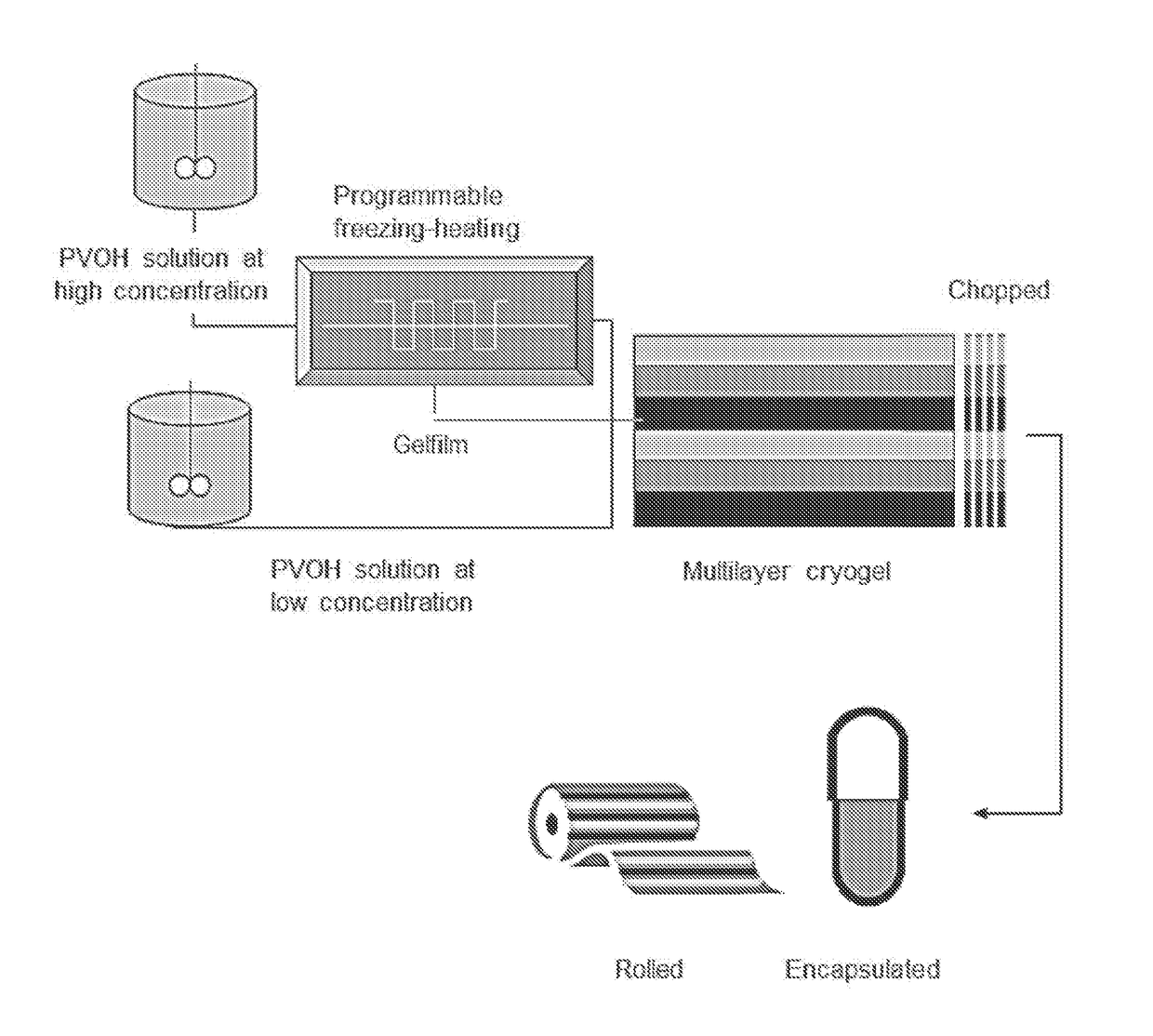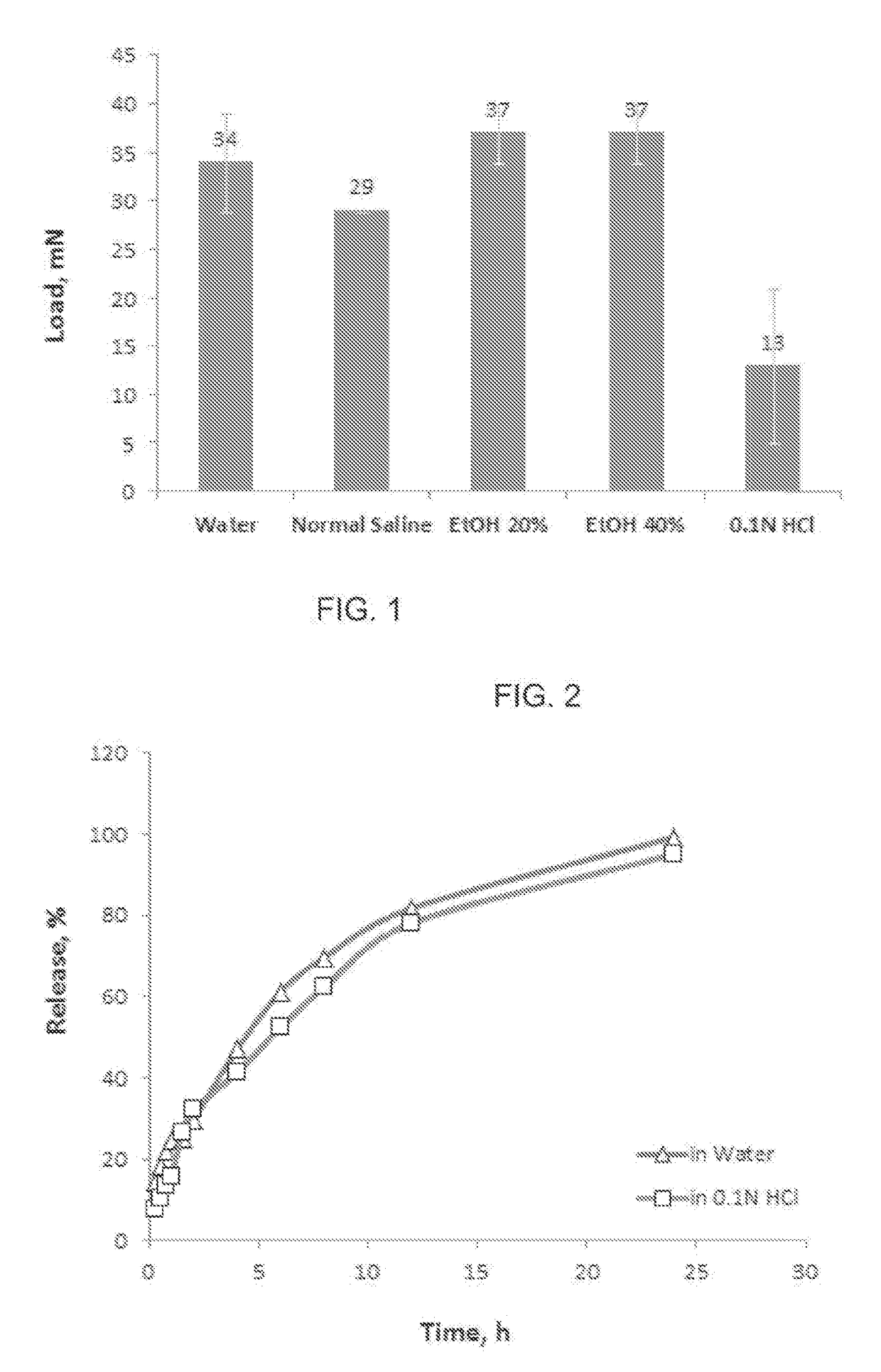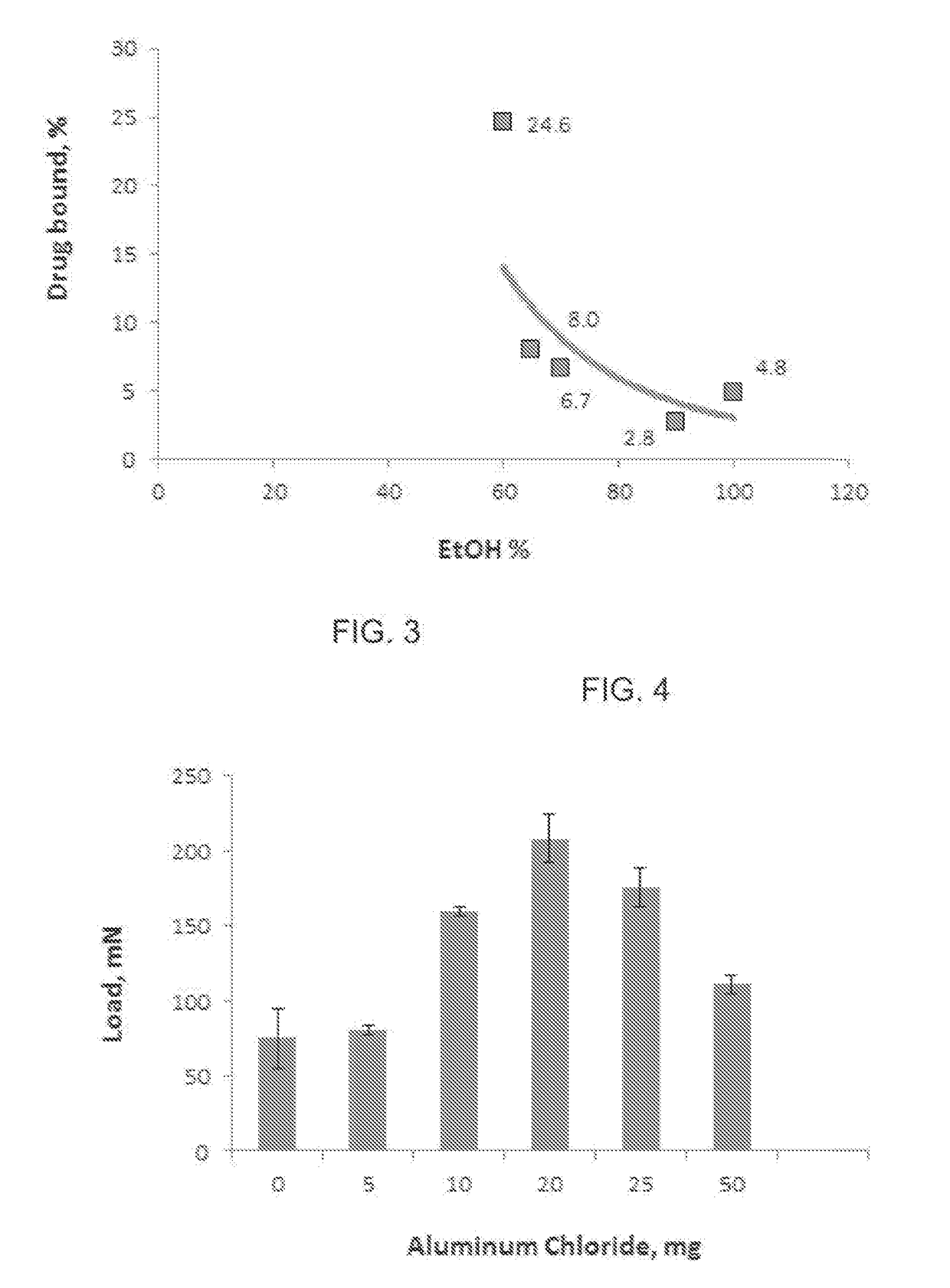Compositions for deterring abuse of pharmaceutical products and alcohol
- Summary
- Abstract
- Description
- Claims
- Application Information
AI Technical Summary
Benefits of technology
Problems solved by technology
Method used
Image
Examples
example 1
lene Oxide) as Deterrent Agent
[0283]Crush resistance and viscosity building are the two most common physicochemical characteristics that have been utilized in formulating abuse-deterrent medications, and to achieve both, very high molecular weight polyethylene oxide (PEO) has been used. It has a very simple structure, potentially least interaction with drug and other excipient, it builds great viscosity in water and hydro-alcoholic solutions, and it melts at relatively low temperature in its solid state. However, low melting temperature of its solid state, shear-dependent viscosity of its solution state, salt and light sensitivity are among disadvantages that need to be taken into consideration when polyethylene oxide is used as deterrent. Moreover, it has very slow dissolution kinetics in aqueous systems; in fact its complete dissolution in water may take hours if no provision is taken to expedite the process.
[0284]PEO concentration in tablets with deterrence potential can be as hi...
example 2
thylcellulose as Deterrent Agent
[0289]Materials: Materials examined in this disclosure are tramadol HCl, sodium carboxymethyl cellulose (Ticalose® 6000 from TIC Gums, and Akucell® from AkzoNobel), aluminum chloride hexahydrate, aluminum hydroxide, zinc acetate, talc, and Prosolv® SMCC (silicified microcrystalline cellulose, JRS Pharma).
Drug Binding Capacity of Carboxymethylcellulose:
[0290]Carboxymethylcellulose (250 mg) was dissolved in hydro-alcoholic solutions (60%, 65%, 70%, 90% and pure ethanol) containing 25 mg of tramadol HCl. The solution was centrifuged @1500 rpm for 5 min, then filtered through a 0.2 μm syringe filter; 0.5 ml of the supernatant solution was diluted with 10 ml of solvent, and then analyzed for drug concentration by UV spectroscopy @271 nm. Results are illustrated in FIG. 3.
Gel Strength Studies Using Three-Valent Salts:
[0291]Aluminum chloride and sodium carboxymethylcellulose (CMC) were weighed and mixed in a glass mortar. 10 mL of distilled water was added t...
example 3
Alcohol Based Cryogels
[0347]In accordance with the invention, a therapeutic crush-resistant cryogel composite with abuse-deterrent capability is formulated using Polyvinyl Alcohol (PVOH), which is a synthetic hydrophilic linear polymer produced as varied copolymer of vinyl alcohol with vinyl acetate, vinyl amine, vinyl pyrrolidone, or ethylene glycol. Due to reactive functional groups on its structure, PVOH undergoes chemical changes such as esterification and etherification, as well as physical changes such as crystallization and ion-polymer complexation. At a given molecular weight and degree of hydrolysis, the mechanical property of the final PVOH cryogel product is essentially determined by its original solution concentration, and the number of freezing and thawing cycles. Lower and higher temperature extremes and duration at which the platform is treated over specific temperature would also affect the cryogel mechanical properties to a lesser extent. The higher the concentratio...
PUM
| Property | Measurement | Unit |
|---|---|---|
| Temperature | aaaaa | aaaaa |
| Temperature | aaaaa | aaaaa |
| Temperature | aaaaa | aaaaa |
Abstract
Description
Claims
Application Information
 Login to View More
Login to View More - R&D
- Intellectual Property
- Life Sciences
- Materials
- Tech Scout
- Unparalleled Data Quality
- Higher Quality Content
- 60% Fewer Hallucinations
Browse by: Latest US Patents, China's latest patents, Technical Efficacy Thesaurus, Application Domain, Technology Topic, Popular Technical Reports.
© 2025 PatSnap. All rights reserved.Legal|Privacy policy|Modern Slavery Act Transparency Statement|Sitemap|About US| Contact US: help@patsnap.com



